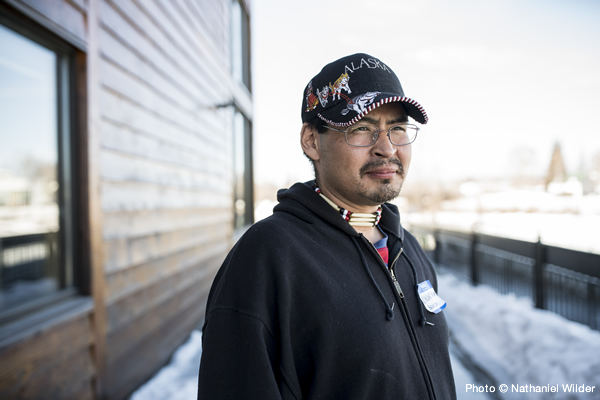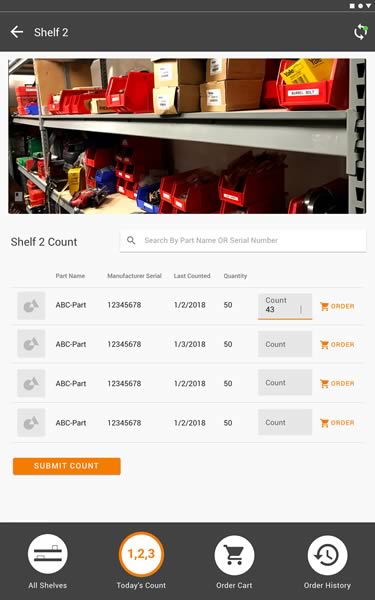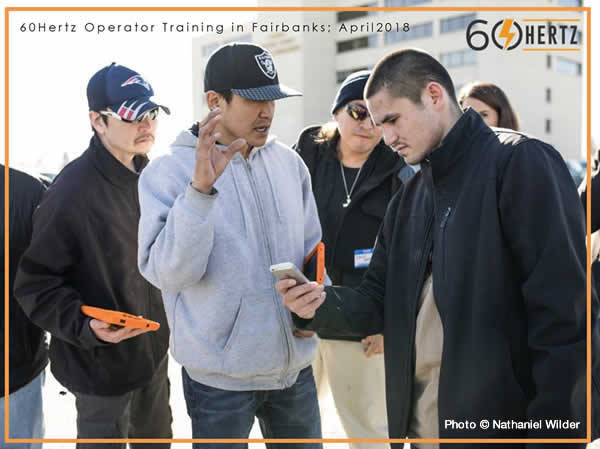
A new mobile app is creating community for Alaskan microgrid operators. It also promises to solve long-standing operations and maintenance challenges. The startup 60Hertz developed the app twelve months ago, and piloted it in fourteen sites during the spring of 2018. 60Hertz will roll-out the app to twenty-five villages in collaboration with the Alaska Village Electric Cooperative. 60Hertz offers the first microgrid maintenance software on the market.
Piper Foster Wilder, founder, says that from the beginning, the company was committed to the principles of human centered design for the app, which has the same name as the company. She hired an anthropologist to travel to some of Alaska’s most remote villages and identify what features in the app might serve that goal. “We’re pitching to an audience that hasn’t had the benefit of formal training as power engineers or in computing,” says Wilder. Her team worked to make sure the app would feel modern, simple and culturally relevant. The app is also supposed to meet the challenges of poor connectivity, whilst supporting technicians who are isolated in small communities, often operating alone under harsh weather conditions and learning on the job.
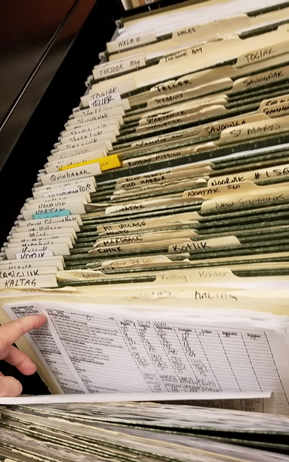
Wilder says the app is designed to replace an outdated and inefficient paper system by organizing digital entry of daily maintenance logs on mobile phones. Whereas plant operators used to fax their paper logs across the state to remote administrators, they are now connected to a server where they can track their work and search a task history any time they want. By connecting village power managers to remote administrators via mobile, the app is providing a new level of human support too.
60Hertz also offers a platform for peer collaboration via messaging and forums, and gives energy managers mobile access to digital information resources and ready access to a digitized spare parts inventory. “We got together with various manufacturers to see what spare parts village power managers should have,” says Wilder. “Now the operator will be prompted once a week to see what’s on hand and to organize their shelves. Good management of spare parts is critical to keep these systems running reliably.”
Why Improving Maintenance is Critical for Alaska Microgrids
Home to an estimated 13% of all the microgrids in the world, Alaska has over 200 remote villages that depend on microgrid systems – usually diesel-powered – to provide critical electricity services. Many of these communities are completely inaccessible by road, depending on what season it is.
Added to the challenge of isolation is the fact that power failure is a chronic problem in these isolated settlements, and it’s usually caused by maintenance issues, lack of funding, the failure to keep up with a maintenance schedule, or a lack of spare parts. Diesel generators can be finicky to maintain – they need their oil changed every two weeks – and it’s often the case that in Alaska, they fail long before the rated lifetime of the equipment. Regular maintenance could improve that.
Chronic Alaska Power Outages Due to Lagging Maintenance
In 2017, one utility had 700 power outages greater than five minutes. In another case several years ago, a community had the last of its four generators fail during the summer, causing thousands of pounds of meat to rot when freezers lost their power. In Alaskan subsistence communities, people harvest meat during open seasons, and they need to make it last for months at a time. When generators fail and meat rots, the state has to allow emergency extensions of the hunting season so people can eat. In another case, the state had to helicopter in a backup generator at a cost of $300,000.
Before she started her business, Wilder says, “I had been hearing a lot of stories about why village power systems were failing so often. There was a lot of cynicism about people’s ability to maintain these systems. I began thinking about how software could help solve these problems.” One day she was in the grocery store watching a traveling maintenance technician take a photo of an ice maker machine with his phone. At that moment Wilder realized a mobile app could help village power technicians with their maintenance tasks, and 60Hertz was born.
Creating Virtual Communities with a Mobile App
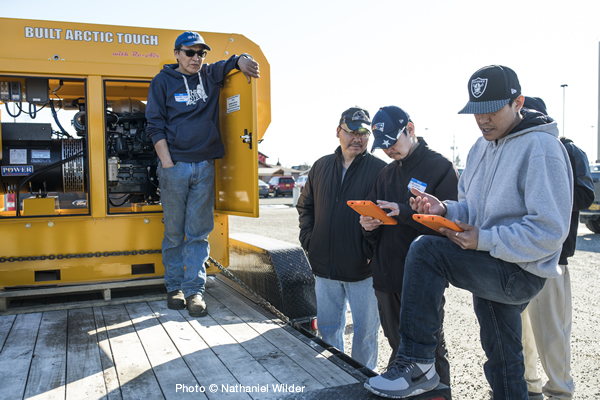
One of the most exciting and unexpected results of the 60Hertz pilot study, Wilder says, is the social impact of the app, which she hopes will help reduce the high turnover rate of village energy technicians. “It turns out that by empowering connections between peer groups, 60Hertz is giving recognition to the work these people do. Many of them just didn’t know how important their jobs were.” The app itself is designed to provide a steady stream of personalized, positive feedback for completed tasks, such as stars for a job well done, welcome messages and other human touches. This is important in isolated communities where people struggle with depression, substance abuse and other issues that stem from a legacy of injustice in native communities. And it seems to be working, judging by the comments that people are contributing on the 60Hertz app.
The software has also provided an important support system for the tiny group of four women (out of a total of 400), who are managing village power systems. They’ve created their own peer group on 60Hertz in a forum that has an interface somewhat similar to Facebook, and they provide each other with moral support. Overall, modern technology is a “marker for success,” bringing pride and improved status to the people who are using it, according to the anthropologist who helped design the app.
Operations & Maintenance for Developing Countries Could Benefit from Mobile App
“Alaska is a proxy for the developing world,” offers Wilder, and a staffer who has worked with African agricultural workers and the German telecommunications company Vodaphone contributes that valuable experience to 60Hertz. Microgrid maintenance is a big issue in developing countries when international aid programs pay for equipment that fails or falls into disuse because no one in the community has been trained or equipped to maintain it.
Wilder hopes that in the future, she may be able to create similar apps for developing country microgrids. But for now, she’s excited to be managing the 60Hertz rollout to Alaskan villages. And, while most villages are currently producing all their power with expensive diesel, many are slowly incorporating renewable energy into their microgrids. That will make an app like 60Hertz even more critical because it will facilitate management of battery storage and increasingly more complex systems, while helping technicians learn about renewable technology. Even if there’s just a small improvement in the maintenance of Alaska’s large fleet of diesel generators, that could be a great contribution.
About 60Hertz
60Hertz is a microgrid maintenance software suited to villages and islanded grids, as well non-traditional microgrids from maritime vessels to backup power for critical infrastructure. Named by Navigant Consulting as the first microgrid maintenance software on the market, the solution enables local operators to be more successful in their work. Alaska is a world-leader in microgrid development; the solution 60Hertz pioneered with Alaska Native power plant operators represents sought-after knowledge the global microgrid market needs. The software offers tablet-based maintenance routines for diesel, hydro, solar, and battery assets with corresponding Administrator Dashboard. Learn more at www.60HertzEnergy.com
